Newbie Winemaker Gifts
Do you have a newbie winemaker in your life you need to get a gift for?
Maybe you are the newbie winemaker, and you need to know what to ask for this holiday season!
Either way, we have prepared a basic gift buying guide for you, to simplify the just-getting-started-winemaking process!
1. CARBOYS. The average home winemaker will never complain about having too many carboys – it just means more vessels to make wine in! You can get them in 3, 5, or 6 gallon formats. It’s always a good idea to get one of each to help accommodate varying volumes.
2. DEMIJOHNS. A more traditional vessel to make wine in, these can hold more volume AND not to mention it, but they are pretty cool looking. You can get them with or without a spigot at the bottom.
3. REFRACTOMETER. These devices are used to check the amount of sugar in grapes, and are indispensable to the serious home winemaker who is also starting to grow their own grapes as well – it helps to tell them when they should harvest!
4. OAK CHIPS. As a great way to play around with flavor, oak chips help the newbie winemaker to get a feel for what oak does to a wine as it ages without the investment in, and care for a full sized barrel. There’s a lot to learn when it comes to proper barrel maintenance, so adding oak chips is a perfect way to get the color and flavor dynamics of working with oak.
5. SIPHON. If your newbie winemaker wants to move beyond using a funnel or mouth siphoning to transfer their wine, an autosiphon will help to elevate them to the next level. It’s going to make their life a lot less messy and will take up less of their time to move their wine from vessel to vessel.
6. GIFT CERTIFICATE. Last but not, least! Purchase a gift certificate and your winemaker can put it towards anything they want. Classes, equipment, grapes, juices, you name it!
Musto Wine Grape Company is here to help! We are New England’s largest supplier for home winemaking products and services. You can get set up with all of your juice, grape and equipment needs and have you on track to making your own perfect pairing for next fall! Visit juicegrape.com or give us a call at (877) 812 – 1137 to learn more. We look forward to hearing from you!
Serving Wine at Your Holiday Meal
We all know the holidays can be a stressful time. But planning your meal and wine pairing doesn’t need to be!
If you’re hosting a holiday meal this year, you’re probably looking forward to the moment you get to sit down and relax with a nice glass of wine. But even before then, you’ll need to decide what to pair with dinner, what to have available for your guests as they mill about pre- and post-dinner, and who will like/appreciate what.
Decisions, decisions!
Whites
-
Looking for some bubbles to get the party started? Oregon’s Argyle Vintage Brut is sure to win over the hearts and palates of everyone at the table.
-
With its low alcohol, slight effervescence, and bright acidity, Broadbent Vinho Verde is a wine that will feel light and fresh, even though your guests might not be feeling that way after a huge holiday meal. Low in price, you can easily purchase this wine by the case and keep pouring throughout the night.
-
Any white wine YOU made! We suggest a Pinot Grigio if you made one, it goes with most foods and people always love a crisp but approachable white wine.
Roses
-
Nothing says Christmas wine like a wine that is titled “Christmas wine.” Duplin Winery’s Southern-inspired Muscadine blend is sure to please, from its image of Santa on the label, to the sweet berry and spice notes it compliments any meal with.
-
Charles and Charles rose is made from a blend of Syrah, Mourvedre, Grenache, Counoise, and Cinsault. An easy to drink yet still very well made rose, this wine will pair especially well with turkey, ham, and cheeses.
-
Did you make a Rose of Black Muscat this year? Or maybe one of Grenache? If so, these are delicious options for the holidays!
Reds
-
Pepp Blauer Zweigelt – think sugar plum fairy in a bottle. This little known grape variety is sure to continue growing in popularity as people come to know its medium bodied, bright fruit flavor profile.
-
The Russian River Valley is known for its outstanding Pinot Noirs, and Flowers never seems to disappoint the Sonoma Coast and what its capable of. Pop open a bottle of this to pour alongside the appetizers or the main course: you can’t go wrong with it.
-
Any red wine YOU made! Show off your winemaking skills to your family and friends!
Dessert Wines
-
Switch it up and introduce your guests to some good ol fashioned Hungarian wine this holiday season! Tokaji is a late harvest wine made from the grape variety Furmint. It’s decadent, extremely sweet, completely delicious, and people rarely want more than a small glass of it, so the 500mL bottle that Royal Tokaji Late Harvest comes in should be just enough for everyone to have a taste.
-
Have a taste of local CT agriculture when you pour a glass of Vino Bianco Del Paradiso from Paradise Hills Vineyard and Winery.
And when in doubt, just pour yourself a glass and remember:
Musto Wine Grape Company is here to help! We are New England’s largest supplier for home winemaking products and services. You can get set up with all of your juice, grape and equipment needs and have you on track to making your own perfect pairing for next fall! Visit juicegrape.com or give us a call at (877) 812 – 1137 to learn more. We look forward to hearing from you!
Cellar Upgrades: Super Transfer Pump
A great cellar upgrade for your favorite winemaker….
The Super Transfer Pump
Super Transfer Pump
If your winemaker is looking for a cellar upgrade look no further than the Super Transfer Pump. It is self priming, and a dream to work with. Your winemaker will no longer loath racking and will get all of their work done quickly and efficiently for only $179.99.
Link to product: http://www.juicegrape.com/Pump-Super-Transfer/
For more information about racking your wine click HERE
Musto Wine Grape Company is here to help! We are New England’s largest supplier for home winemaking products and services. We can get you set up with all of your juice, grape and equipment needs and have you on track to making your own perfect pairing for next fall! Visit juicegrape.com or give us a call at (877) 812 – 1137 to learn more. We look forward to hearing from you!
What’s Going in the Winery? – December Wine Racking
December is all about Racking, Racking, Racking!
Tis the season for holiday gatherings and fun, but don’t neglect your wine. Your wine should be pressed (if necessary) and racked a minimum of two times at this point.
Racking is the process of transferring the wine to a fresh, sanitized container, to remove it from the sediment that has fallen out of suspension. This a natural way to clarify your wine.
A few racking tips:
- Make sure you sanitize the siphon tubing, pumps, and new vessel thoroughly with sulfites
- Always top up the new container as much as possible up to 1” of the top
- Try not to disturb the layer of sediment on the bottom of the original vessel by keeping the siphon tip close to the surface of the wine.
- To read more information about how to rack you wine click here
Musto Wine Grape Company is here to help! We are New England’s largest supplier for home winemaking products and services. We can get you set up with all of your juice, grape and equipment needs and have you on track to making your own perfect pairing for next fall! Visit juicegrape.com or give us a call at (877) 812 – 1137 to learn more. We look forward to hearing from you!
How to Cure Black Olives at Home
The Black Olives have officially arrived and Stevie is excited! So excited in fact that he has shared his Black Olive Curing recipe.
See below for how to cure your black olives at home.
Stevie’s Black Olive Curing Recipe:
-
Purchase your olives from Musto Wine Grape and Stevie “The Olive King”
-
Layer fresh black olives with pure sea salt or pickling salt (you don’t want your salt to have additions of iodine). You can use a glass jar or olive crate.
-
Each day, drain off the bitter water which is being released from the olives.
-
When they stop giving off the liquid, they are ready.
-
Rinse and then rub with oil and they are ready to eat.
Pro Tip: You can then also add other flavors, such as garlic, chili pepper or lemon zest.
Interested in making your own green olives? Check out Musto’s Green Olive Infusion kits – 2.5lbs of green olives ready to be infused and consumed! Click here for more details –> https://wp.me/p9ZM5f-vZ
More ways to Cure Olives at Home –> https://www.wikihow.com/Cure-Olives
Gift Guides for Winemakers and Wine Lovers
Below is our round up of our 2019 Wine Gift Guides!
Take a look and find something for your favorite wine lover and winemaker.
Gift Certificate
Purchase a Musto Wine Grape Gift Certificate for any desired amount. We are sure your winemakers will put it toward their most desired items in the Spring and Fall winemaking seasons.
Link to product: http://www.juicegrape.com/Gift-Certificate-25-50-100/
Top Gifts for Wine Lovers
Looking for gifts for your favorite winos? Check out our Top Gifts for Wine Lovers.
Link: http://blog.juicegrape.com/index.php/2019/11/top-gifts-for-wine-lovers/
Top Gifts for Winemakers Under $25.00
Looking for stocking stuffers for your favorite winemaker? We’ve got you covered!
Link: http://blog.juicegrape.com/index.php/2019/12/top-10-winemaker-gifts-under-25-00/
Top Gifts for Winemakers Under $50.00
Great gifts don’t have to be expensive. Give your Winemaker something they will use every season. Maybe they’ll even give you some extra wine as a thank you 😉
Link: http://blog.juicegrape.com/index.php/2019/12/top-10-winemaker-gifts-under-50-00/
Top Gifts for Winemakers Under $100.00
Your winemaker works hard every harvest to create delicious wine for you! Why not give him something to upgrade his wine cellar?
Link: http://blog.juicegrape.com/index.php/2019/12/top-10-winemaker-gifts-under-100-00/
Holiday gifts for the winemaker in your
More gifts to check out!
Link: http://blog.juicegrape.com/index.php/2019/12/holiday-gift-guide-for-winemakers/
Questions? Still don’t know what to get your winemaker? Give us a call at 877-812-1137 or email sales@juicegrape.com to discuss the perfect gift for your winemaker.
Top 10 Winemaker Gifts Under $25.00
It’s gift giving season and we know sometimes it can be hard to find the perfect gift. Below is a list of our suggested gifts for your favorite winemakers!
Bottle Brush
Cleaning bottles can be a pain, but the Bottle Brush makes this chore easier! For only $2.50 you can save your winemaker a lot of time!
Link to product: http://www.juicegrape.com/Brush-Bottle/
Airlock
Airlocks are one of the smallest, but one of the most important items a winemaker owns. They are small and mighty tools that help us know how the wine is fermenting, while keeping it protected. Winemakers can always use airlocks. Only $2.50 it makes for a great stocking stuffer or add on to your winemaker’s gift.
Link to product: http://www.juicegrape.com/Airlock-Double-Bubble/
Corks
Corks keep your wine safe until you drink it (which is the best part). These are a great gift for any winemaker because they will always need a few extra on bottling day. Ranging in price from $20.00/100ct bag and up, we have all the corks your winemaker needs to safe keep their wine.
Link to product: http://www.juicegrape.com/Racking-Bottling/Corks-Stoppers
Oak Chips
Oak chips are a great alternative to oak barrels. They are less expensive than an oak barrel but impart a similar flavor. If your winemaker can’t fit a barrel in their home winery this is a great close second. Ranging in price from $10.00 a bag and up, we have all of the oak styles your winemaker is searching for.
Link to product: http://www.juicegrape.com/categories/Barrel_Alternatives
Oak Flavoring Tube
Oak flavoring tubes pair perfectly with oak chips. These stainless steel tubes keep your aging vessel clean, while adding rich, oak flavors to your wine. Starting at $28.50 for a 6 gallon size, this is a great gift pack when coupled with a bag of oak chips.
Link to product: http://www.juicegrape.com/Oak-Flavoring-Tube-56-Gal/
Wine Tumblers
Our new insulated wine tumblers are durable, ergonomic and versatile! They have a double wall stainless steel construction that maintains your drink’s temperature for up to 3 times longer, great for taking your hot or cold drinks on the go! Any winemaker would be excited to have these for tastings with friends. These are currently on sale for only $11.99, marked down from $14.99!
Link to product: http://bit.ly/Wine-Tumblers
Hydrometer
Hydrometers help your winemaker to keep track of fermentation. Another small, but mighty piece of equipment that is important and needed in every winemaker’s cellar. Only $10.00, this is a great stocking stuffer or add on to a winemaker’s basket of goodies.
Link to product: http://www.juicegrape.com/Hydrometer-Triple-Scale/
Flashgum
Something that should be in every winemaker’s toolkit. We winemakers like to think of this as “pixie dust”. When used in wine it helps smooth out a wine’s mouthfeel and eliminate those harsh attributes that can come from a tough fermentation or if your wine is young. Only $7.99 for a 6 gallon batch this is a great go-to for winemakers.
Link to product: http://www.juicegrape.com/Flashgum-R-Liquide-4oz/
Super Kleer
Super Kleer is one of the easiest ways to clarify your wine. Especially helpful for winemakers who create white wines, it helps large proteins and solids drop out of the wine with no hassle. A great $5.00 item to always have in the cellar, just in case.
Link to product: http://www.juicegrape.com/Super-Kleer/
Wine Wheel
Writing up tasting notes? Having a wine tasting party? This wine wheel helps you find the words to describe your wine and on the back, has a list of wine faults and what to watch out for. Sometimes the most important thing for a winemaker is to recognize a fault early so they can correct it without impacting the wine quality. A great tool for any winemaker or wine lover – only $4.99!
Link to product: http://www.juicegrape.com/wine-wheel/
BONUS GIFT IDEA
Gift Certificate
Purchase a Musto Wine Grape Gift Certificate for any desired amount. We are sure your winemakers will put it toward their most desired items in the Spring and Fall winemaking seasons.
Link to product: http://www.juicegrape.com/Gift-Certificate-25-50-100/
Questions? Still don’t know what to get your winemaker? Give us a call at 877-812-1137 or email sales@juicegrape.com to discuss the perfect gift for your winemaker.
Top 10 Winemaker Gifts Under $100.00
It’s gift giving season and we know sometimes it can be hard to find the perfect gift. Below is a list of our suggested gifts for your favorite winemakers!
Corker
For $65.00 the Portuguese Corker is a great gift for any winemaker! If you’re just starting out or you just need more people corking on the bottling line, the Portuguese corker is a great value.
Link to product: http://www.juicegrape.com/Corker-Floor-Portuguese/
Glass Carboy
No matter the style of winemaking every winemaker needs a glass carboy. Carboys are used for fermentation, aging, and storage. Only $38.00 and you’ve got your winemaker a gift that will keep on giving.
Link to product: http://www.juicegrape.com/Carboy-Glass-6-gal/
Demijohn
Used in the “Classico” method of winemaking. These not only are used for fermentation, storage, and aging, but they make a great display piece! Some even come with a spigot where you can draw a glass of wine out of. These range from $28.50 and up depending on the size. A great gift for any old world winemaker.
Link to product: http://www.juicegrape.com/categories/Containers/Demijohns
Bottles
Every winemaker needs bottles to display their masterpiece. Give the gift of bottles to a winemaker, and you never know, you might get something delicious in return.
Link to product: http://www.juicegrape.com/categories/Bottles_and_Jugs/Bottles
Bottler Tree
For anyone who has ever bottled wine you know it can be a long day. The bottle tree helps speed up the process and organizes the bottles before they are filled. The tree holds 81 bottles for only $38.50.
Link to product: http://www.juicegrape.com/Bottle-Tree/
Bottle Rinser
This popular $20.00 item never goes out of style. This saves time and the winemaker’s sanity on bottling day.
Link to product: http://www.juicegrape.com/Washer-Bottle-Avvinatore-Bottle-Rinser/
Rack & Fill Kit
A steal at $10.00, this Trew Brew Rack and Fill makes winemaker’s lives a lot easier when transfer wine from one container to the other.
Link to product: http://www.juicegrape.com/Siphon-Trew-Brew-Rack-and-Fill-Kit/
Must Scoop
Ever had to shovel must? If you’ve helped your winemaker press you know how much must needs to get transferred into that press. This simple and affordable must scoop helps press day go a little faster for only $10.00.
Link to product: http://www.juicegrape.com/Scoop-Must-Plastic/
Stainless Steel Oak Flavoring Tube
An oak flavoring tube saves your winemaker time, money, and the stress of working with an oak barrel. Yet, they are still able to impart the oak flavor they desire. Each oak flavoring tube can be filled with oak chips to impart oak flavor with easy clean up.
Link to product: http://www.juicegrape.com/Oak-Flavoring-Tube-56-Gal/
All Juice Kit
The perfect winemaking kit! Experienced winemakers looking to compliment their skills will become instantly rewarded with the introduction of fresh grape must. With over 25 varieties sourced from all over the world, the Original AllJuice will instantly become a part of your cellar for only $99.99/pail.
Link to product: http://www.juicegrape.com/categories/Winemaking_Kits/Mosti_Mondiale/Original_All_Juice
BONUS Gift Idea!
Gift Certificate
Purchase a Musto Wine Grape Gift Certificate for any desired amount. We are sure your winemakers will put it toward their most desired items in the Spring and Fall winemaking seasons.
Link to product: http://www.juicegrape.com/Gift-Certificate-25-50-100/
Questions? Still don’t know what to get your winemaker? Give us a call at 877-812-1137 or email sales@juicegrape.com to discuss the perfect gift for your winemaker.
Pasqual Musto’s Limoncello
Pat Musto aka “The Juice King’s” Limoncello Recipe
My Grandfather is first generation Italian. He was given a delicious, authentic Limoncello recipe from his good friends in Bolognia. He and my Grandmother used to visit them when they were in Italy. There was a little restaurant where their friends knew the owner. It was one of their favorite places to eat in Italy. Every time they would visit, they would go there and have a great dinner. Once night, the owner sat down at their table and shared a bottle of Limoncello he made. My Grandfather liked it so much that the restaurant owner gave him the recipe.
It’s become a time honored tradition in our household to make Limoncello for family gatherings. I always enjoyed sipping on it and listening to my Grandfather talk about his travels and business stories. I hope you enjoy this recipe and enjoy time with those you love.
Ingredients:
-
Large or medium sized clear bowl
-
Bottle of either grain alcohol or vodka
-
12 large lemons
-
Potato peeler
-
Saran wrap
-
6 cups of sugar
-
6 cups of water
-
Cheese cloth
Instructions:
-
Take 1/5 of grain alcohol or vodka and add to the zest of 12 large lemons. Use a potato peeler to get the best slices of lemon peel. Put saran wrap over glass bowl and let it sit on the counter for 1 week.
-
Take 6 cups of water and 6 cups of sugar and make a simple syrup. When the sugar is all melted and the liquid is melted, pour it into the bowl with the vodka and lemon peel. Let it sit for another week.
-
Strain it through cheese cloth, get the juice out of the lemon peel. Bottle it and put it in the freezer.
-
When you serve it, pour it right out of the freezer – it’s awesome with the ice flakes.
This Recipe uses EVERYTING!
For example: Put the lemons in the ice cube tray and freeze them, and use them in your water. Or take a little of the lemon juice and peels after you squeezed the juice out, put it in the pitcher, with some ice cubes and make lemonade.
Don’t you just love “there was a little restaurant” stories? Do you have one? Share below, we’d love to hear about yours…
Top 10 Winemaker Gifts Under $50.00
It’s gift giving season and we know sometimes it can be hard to find the perfect gift. Below is a list of our suggested gifts for your favorite winemakers!
Bottles:
Every winemaker needs bottles to display their masterpiece. Give the gift of bottles to a winemaker, and you never know, you might get something delicious in return.
Link to product: http://www.juicegrape.com/categories/Bottles_and_Jugs/Bottles
pH Checker:
A great, easy to use and economical pH meter. pH is very important in winemaking and can be difficult to figure out depending the meter. This meter makes checking pH a breeze no matter how experienced the winemaker. For only $25.00 this is a great testing option.
Link to product: http://www.juicegrape.com/ph600-box-milwaukee/
All Grape Pack
100% pasteurized crushed and destemmed grapes as “Mother Nature” intended! A great way for your winemaker to punch up the body or tannins in their wine, no matter if they are using wine juice or a wine kit. Shelf stable, this $19.99 item is a great thing to have in every winemaker’s tool box.
Link to product: http://www.juicegrape.com/Mosti-Mondiale-All-Grape-Pack/
Metabisulfite – WINY
The purest and high quality sulfite. The WINY product is a great sulfite addition pre-bottling. Only $12.00/kg, something not every winemaker would buy for themselves but should.
Link to product: http://www.juicegrape.com/Potassium-Metabisulfite-Winy-1kg/
Winemaking Analytical Services
Musto offers a plethora of testing services for winemakers and their wines. Help your winemaker take advantage of the testing we have to offer! Ranging from $10.00 and up per test, this is a great gift for any winemaker. You never know when you’ll need some winemaking advice.
Link to products: http://www.juicegrape.com/categories/Analytical_Services
PVC Shrink Capsules
Help your winemaker dress up their bottles with colorful PVC Capsules. Only $10.00/100ct bag, these capsules make any homemade wine look like it belongs on the shelf at your favorite wine shop.
Link to products: http://www.juicegrape.com/Racking-Bottling
Auto Siphon
Ever had to siphon wine? If you have then you know that the auto siphon is a life saver! And if you haven’t siphoned wine before, believe us, this will help speed up the process with ease for only $15.00!
Link to product: http://www.juicegrape.com/Siphon-Auto-12in/
Winemaker Magazine Subscription:
Winemaker Magazine is the only winemaking publication your winemaker needs. Articles written by some of the Musto Crush Crew, as well as winemakers from Napa and Bordeaux, this magazine subscription is something we all look forward to each month.
Link to product: http://bit.ly/2XbKILK
Techniques in Home Winemaking Book
Daniel Pambianchi is one of our favorite writers! This is because his winemaking book is our favorite and we still use it to this day. We refer to this as the “home winemaker’s bible”. For only $21.95 this is a gift that keeps on giving.
Link to product: http://www.juicegrape.com/Book-Techniques-in-Home-Winemaking/
Gift Certificate
Purchase a Musto Wine Grape Gift Certificate for any desired amount. We are sure your winemakers will put it toward their most desired items in the Spring and Fall winemaking seasons.
Link to product: http://www.juicegrape.com/Gift-Certificate-25-50-100/






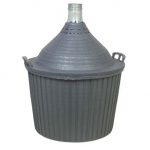

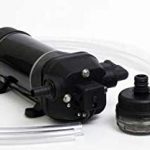

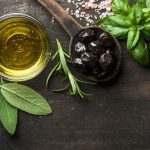
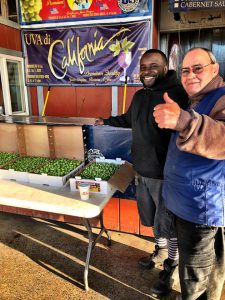



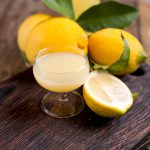
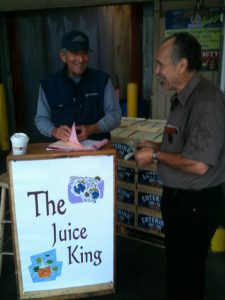

Recent Comments